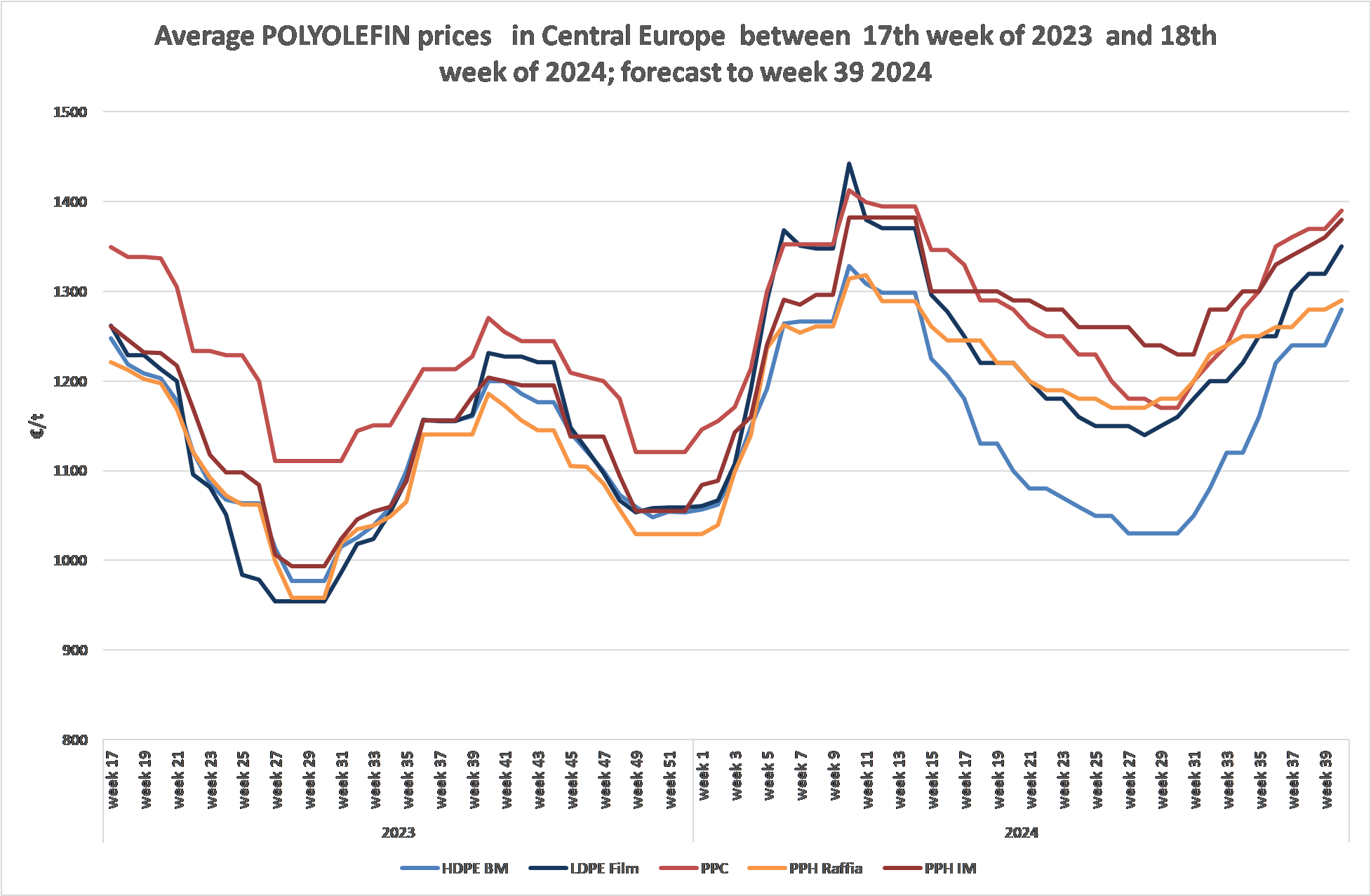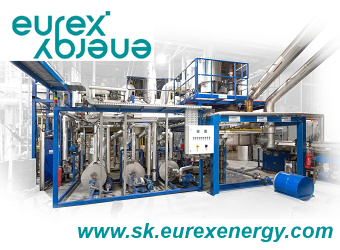Expected price dynamics of commodity polymers in the third quarter of 2024
The year 2024 has so far been characterised by weak demand. In fact, the European market has become oversupplied as a result of deteriorating export opportunities for polymers produced in Europe and stagnating or declining demand from European consumers and the resulting industrial production.
All of this has an impact on the plastics industry as well, the direct consequence of which is a smaller-than-usual backlog; and the fact that the converters are working with smaller polymer stocks than usual, trying to maintain their purchasing flexibility and cash-flow position. All this is not easy, because supply and demand and prices fluctuate.
In the last two years, we experienced 4 price waves, which followed each other in a period of 22-24 weeks. The first two waves were smaller and occurred at a higher price level. However, the latter two, which took place in the past year, were already clearly noticeable for all polymers for all market participants.
The waves follow the logic below: When European prices are low or start to decrease, as is the case now, when imports slow down, and at the same time, many European manufacturers reduce their production; availability will drop. As converters have relatively low polymer inventory levels, they are quick to panic, and minor panics are not uncommon. This gives European manufacturers the opportunity to raise prices. However, due to weak demand, price increases cannot be too steep or too large, as competitors are quick to exploit pricing errors. The higher price level immediately stimulates imports and European polymer production, which slows and at the same time limits price increases. Based on the 4 price waves of the last 2 years, we can conclude that a full price wave means a movement of 250-350 €/t from the bottom to the top.
The duration and wavelength of the price wave depends significantly on the duration of sea transport and the restart of European plants. The European market will operate in stop and go mode in 2024. This means that larger polymer manufacturers schedule maintenance at different sites, thereby limiting their emissions at the company group level. Also, unplanned shutdowns of FMs are becoming more and more frequent.
Now we are heading towards the "wave valley" following the first "wave crest" of the year. Market participants are primarily concerned with the question of when prices will reach their bottom value in this period, what will be the "bottom" and how long will the low-price period last?
This year's first price wave reached its maximum in the 10th week, in the case of polypropylene it peaked for 4 weeks, until mid-April, and then started to decrease. In the case of polyethylene, the turnover was faster; after the 10-week peak, prices started to decline. For both polyolefins, prices can be expected to bottom out by the end of May. Logically, the "bottom price" of the price range should be represented by import prices. However, now the imbalance is not caused by the oversupply due to the influx of imports, but rather by the lack of demand. Thus, it is likely that European polymer prices, especially in the case of HDPE, PPC and PVC, will go below the import price level, as there are already sporadic examples of this. Behind everything is the relatively broad European supply. In the case of LDPE, European prices approached import prices, but the supply, especially of MFR 0.3 grades, is by no means as wide as that of HDPE. Thus, it is unlikely that LDPE prices will fall near or below €1,100. In the case of PPH, tight supply is an obstacle to price reduction, especially in the case of IM and non-woven textile grades with high MFR. For grades between MFR 2.5-4, there is an import supply, the cheapest prices are still above €1,100, it is expected that some European manufacturers will also reach this price level. We do not expect PPH prices below €1,100.
However, in the case of polystyrenes, the price reduction of European products is primarily driven by the expected decrease in the price of stryene monomer in the next 2 months. For this reason, it is likely that the prices of European products will go below import prices by July. In the case of EPS, this can happen at the end of May, beginning of June. Especially because the import prices reflect the situation 6-8 weeks earlier due to the long delivery time.
Due to the usual summer holidays, it is likely that the stagnation at the low price level will last even 4-6 weeks, from the beginning of June to the middle of July. The buying intention and activity of converters is expected to pick up at the end of July, on the one hand, because they start waiting for higher prices, and on the other hand, because the autumn season is approaching. As a result, we expect rising prices during August-September.
As autumn approaches, demand will probably pick up at the beginning of August and prices will start to rise. The price increase will probably last until the beginning of October, and we could also say that the October price increase will not go through due to a lack of demand.
 | |
How long will this fluctuation in prices last? Until something changes significantly in the European economy. On the one hand, a significant revival of demand would be needed in order for prices to move upwards permanently and for the length of the wave to increase. However, the revival of demand does not only require lower inflation and falling interest rates; it would be important for customers' confidence in the future to turn in a positive direction.
On the other hand, European polymer production should be reduced by almost 20% in 2024 compared to 2021. This is a very large number and not possible in the short term. However, several European polymer producers have recognized the situation, and there are reports of cracker shutdowns, which will be followed by the shutdown of polymer production capacities in the medium term, primarily in Western Europe.
On the supply map of Central Europe, we expect some major changes in the supply structure. Western European polymer manufacturers are likely to establish a greater presence in our region, as this market has growth potential at all. Some major European polymer producers intend to establish new logistics hubs in Central Europe in 2024. But big international traders also have similar plans. It should be noted here that, in contrast to Western European trends, PP and HDPE capacity expansions are expected in the South Central European region (SCE) in the coming years, due to which the market will shift in Central Europe.
In summary, we can conclude that we now have to live with fluctuating prices and volatility. It is important to identify the phases of the cycles well; buy at the right time and in sufficient quantities.
- autor:
- myCEPPI









